Farmers, Ranchers Struggle with Hog-Wild Feral Swine Population
TOPICS
Market Intel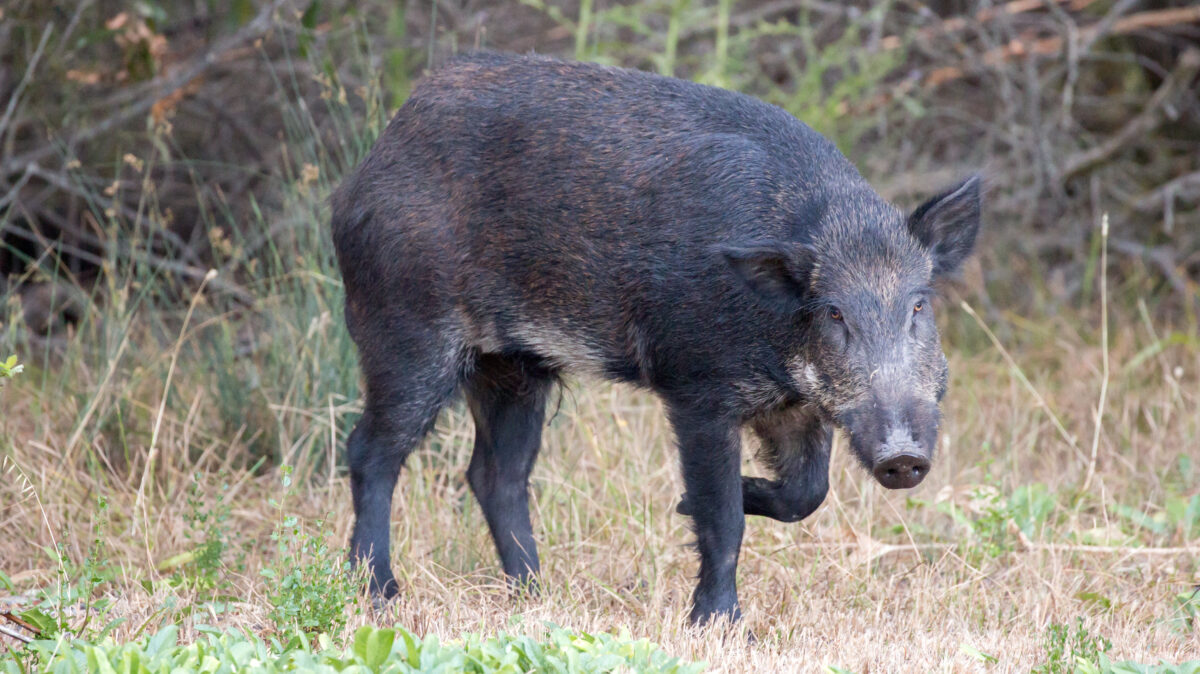
photo credit: Getty Images
Daniel Munch
Economist
More than 6 million feral hogs roam the United States. From Hawaii to Florida, these invasive cousins of domestic swine have increased their range from 17 states in the 1980s to more than 35 states today. Able to breed year-round with average litters of five-eight piglets, feral hog populations can double in size within four months. Weighing between 75 and 500 pounds, feral hogs’ aggressive behavior is very destructive to agriculture, natural ecosystems, people, pets and livestock. In today’s article, we review the latest feral hog-related damage estimates, with a particular focus on harm to farm and ranch families.
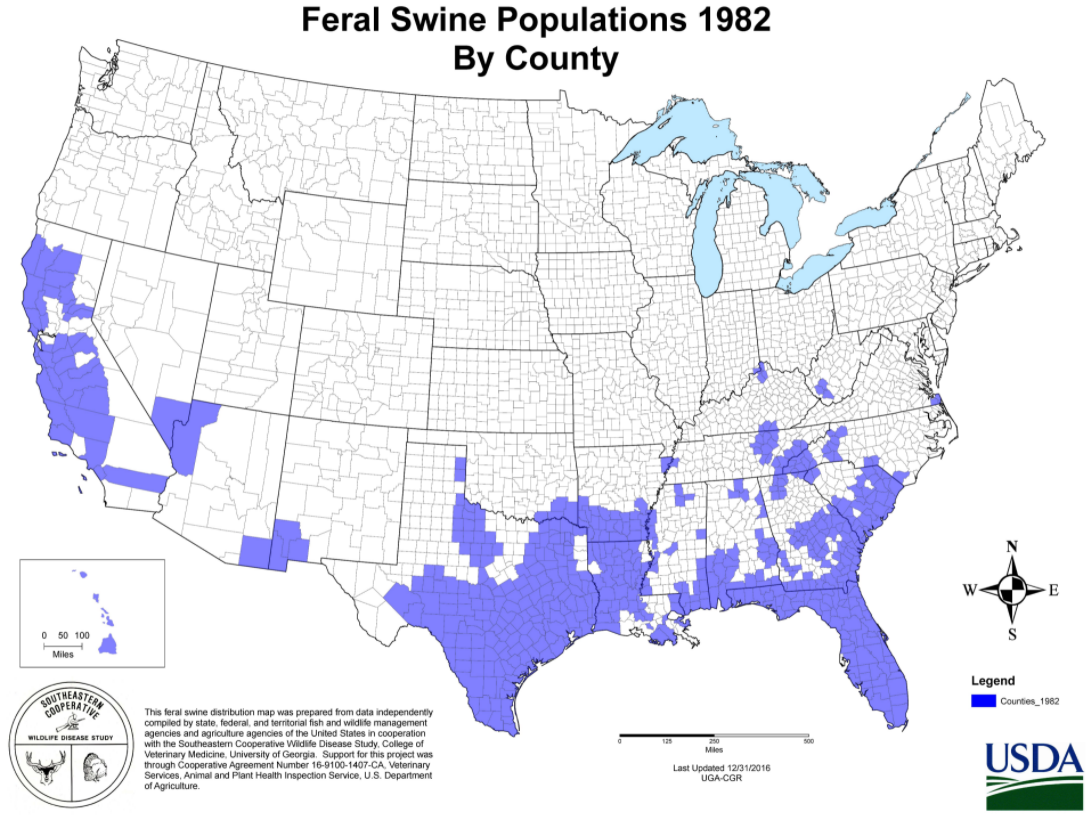
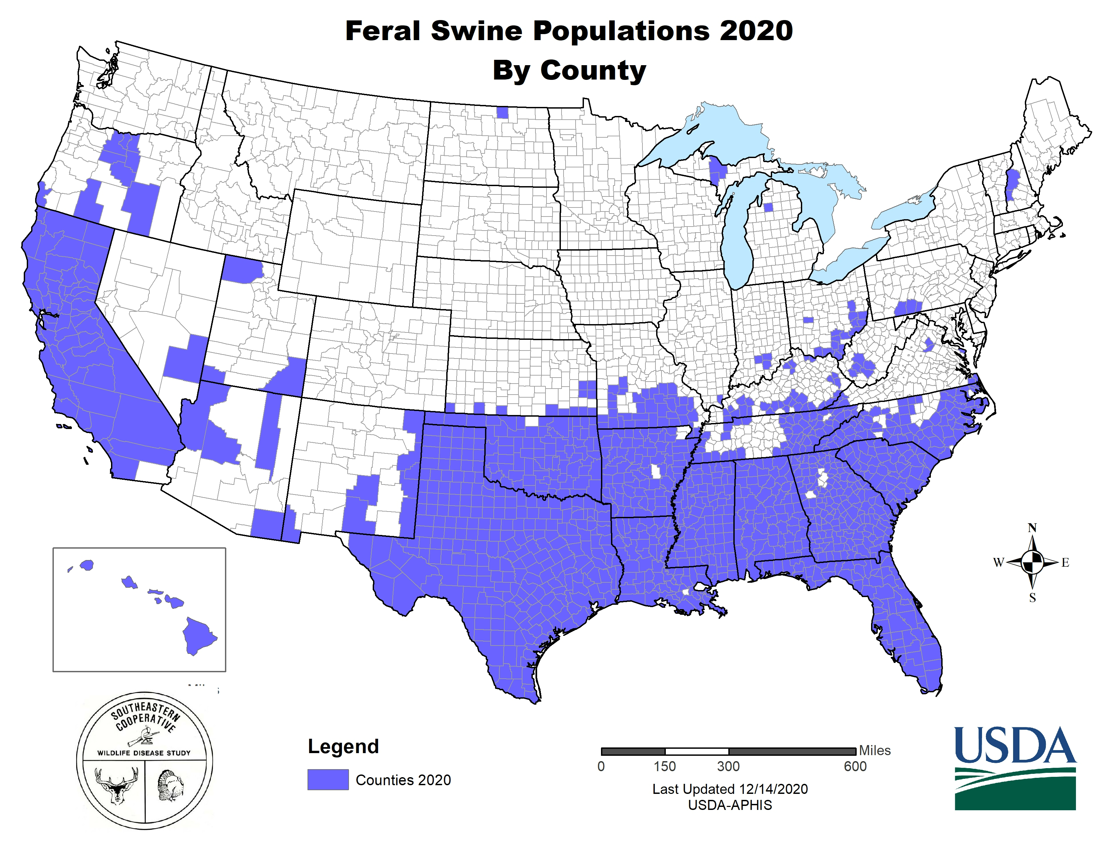
Modern day feral swine descended from released or escaped domestic pigs dating back hundreds of years. Like their domestic counterparts, they are not picky when it comes to diet and notoriously root, trample and destroy the environment they inhabit. The maps above, generated by USDA’s Animal and Plant Health Inspection Service, illustrate counties where established feral hog populations were reported in the given year. Although primarily centered around warmer, Southern climates, feral hogs have successfully maintained growing populations in Canada and are well-documented surviving in extreme conditions across the climatic scale, making them well-adapted to thrive across North America.
Where there are feral hogs, there are threats to farming and ranching. These animals will eat and uproot almost any crop, with common targets including sugar cane, corn, grain sorghum, soybeans, wheat, oats, peanuts and rice. Vegetables and nut and fruit crops are also favorites and pastureland makes an inviting place for herds to wallow, killing desired perennial grass species that provide feed to livestock. Damaged pastures and rangeland increase operational reliance on outside feed sources, increasing farm input costs and decreasing overall land value.
In a 2016 study of feral swine damage in select states, APHIS economists calculated a conservative estimate of annual crop damage at $190 million for corn, peanuts, rice, sorghum, soybeans and wheat. Figures 1 and 2 display the breakdown of these damages by commodity and state. Keep in mind, feral swine impact producers far outside the studied region, making actual direct crop losses much higher. These calculations also do not include losses to crops outside the six explicitly listed, including pasture or rangeland damages. Texas, the state with the highest estimated feral hog population, had the highest annual crop losses – nearly $90 million. Corn takes the largest hit, with almost $62 million in losses, followed by peanuts ($41 million) and wheat ($28 million). Oklahoma, a state not included in the study but heavily impacted, reported $7 million in damages across 658 properties treated by state Wildlife Services in fiscal year 2021.
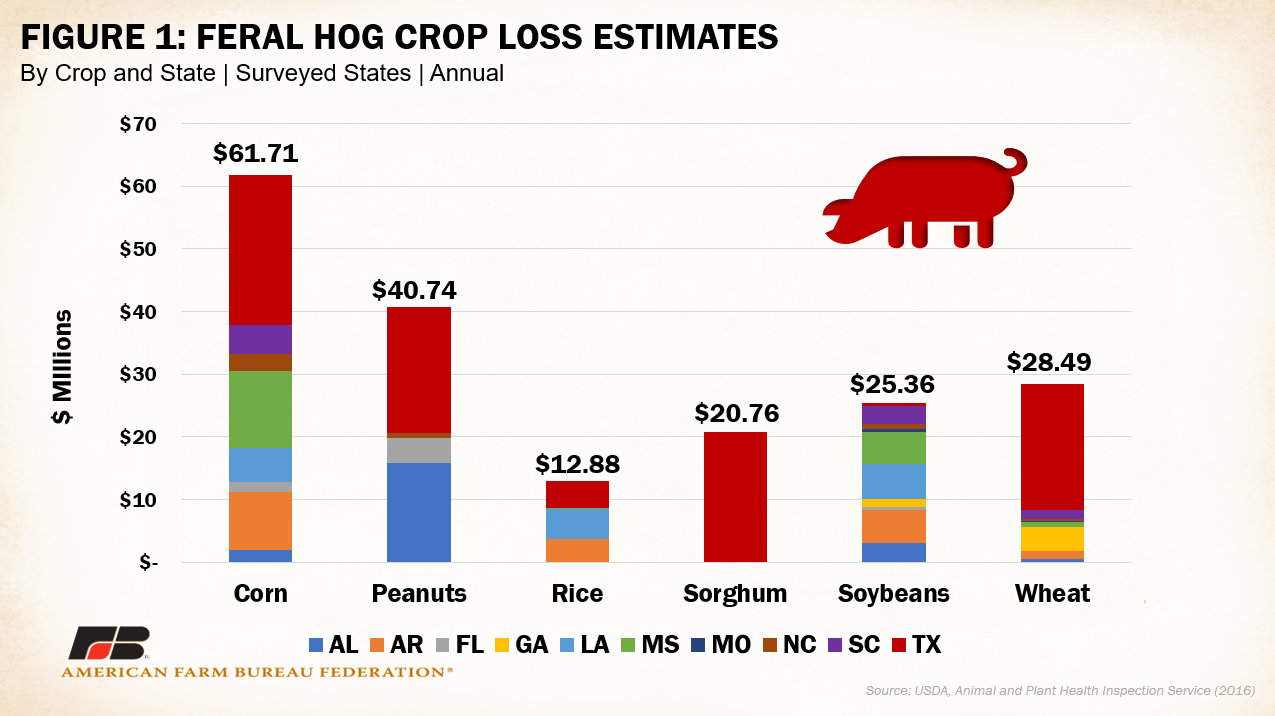
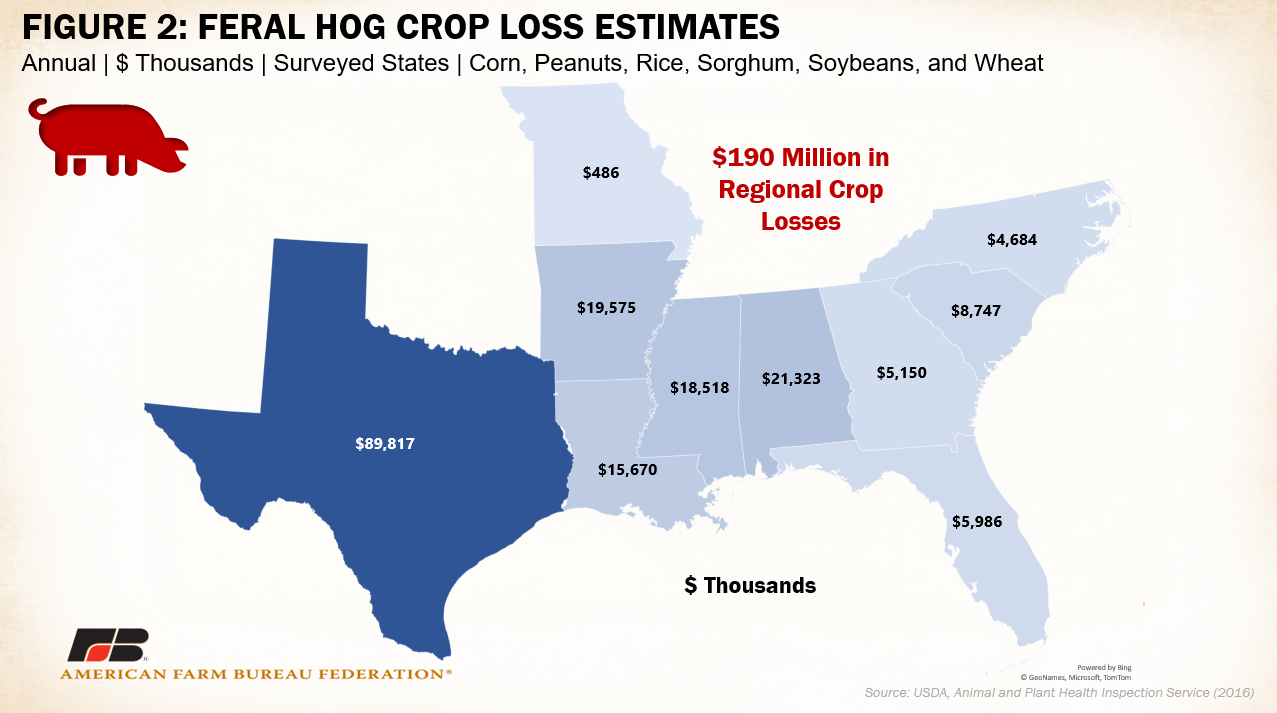
Feral hogs negatively impact timber growers by tusking and consuming tree seedlings and saplings, decreasing the value of forest plots that have multiyear revenue implications. On the livestock front, feral hogs have been documented killing calves, lambs and vulnerable animals during the birthing process. Additionally, they play an active role in transmitting more than 30 dangerous diseases including pseudorabies and swine brucellosis. Current outbreaks of African Swine Fever that have resulted in billions of dollars in losses across the globe heighten the need for the eradication of wild swine populations that can transmit foreign diseases. A foot-and-mouth disease outbreak, for example, would cost the U.S. $13.6 billion to $20.8 billion in the first year alone, further intensified by spread among feral herds. Feral swine are estimated to exist in 43% of swine-producing counties, increasing the likelihood of contamination and disease spread, and greatly increasing the difficulty of controlling the disease.
Landowners deploy a wide range of costly control techniques to reduce feral swine populations on their land. Figure 3 displays the average annual cost for some of these management practices by producer. It is important to note that farmers and ranchers are unlikely to utilize all control methods listed, so combining these costs would not be accurate. Chosen tactics differ regionally and from landowner to landowner. For instance, aerial hunting is mainly reported in Texas, likely a result of high associated operational costs that justify this tactic for controlling larger hog populations. The APHIS study also concluded shooting feral swine on sight was the most common method, followed closely by hunting and trapping. Similarly, these were the most expensive control methods. Figure 4 summarizes average per-producer control costs by state, accounting for the differences in reported control methods utilized and do not include the government expenditures related to management by USDA Wildlife Services. Georgia had the highest per-producer annual control cost of $2,060.
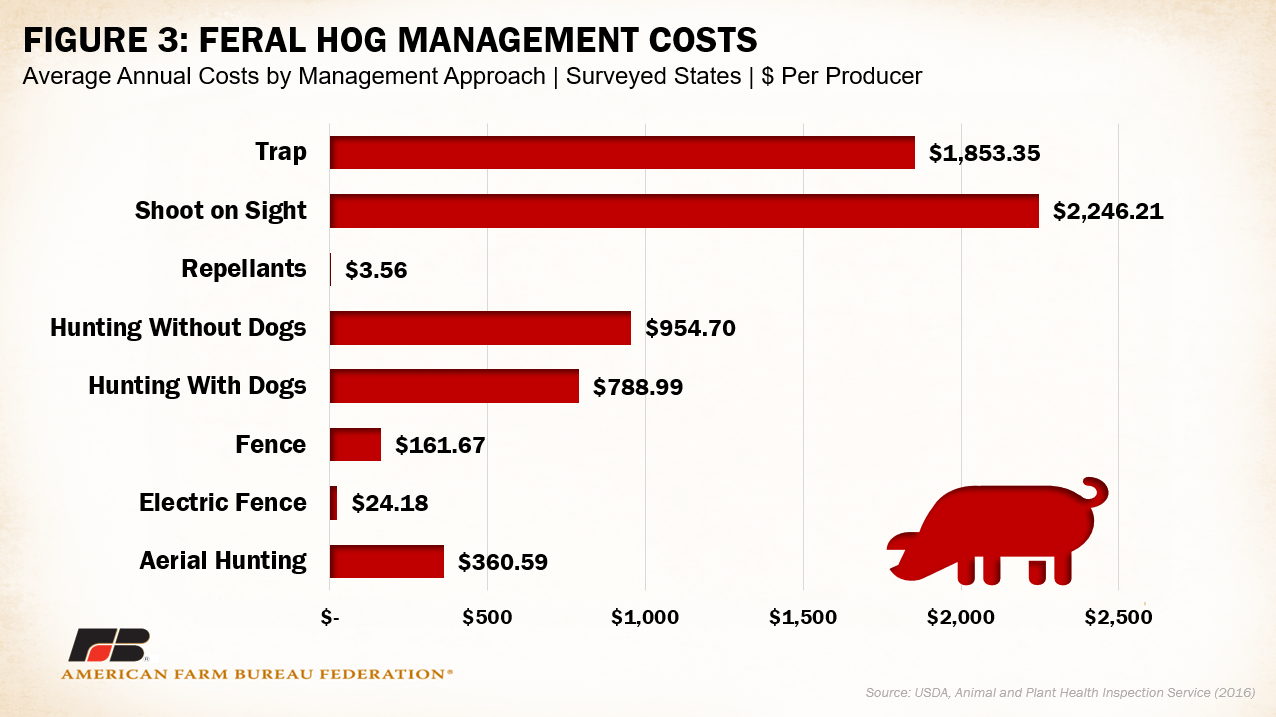
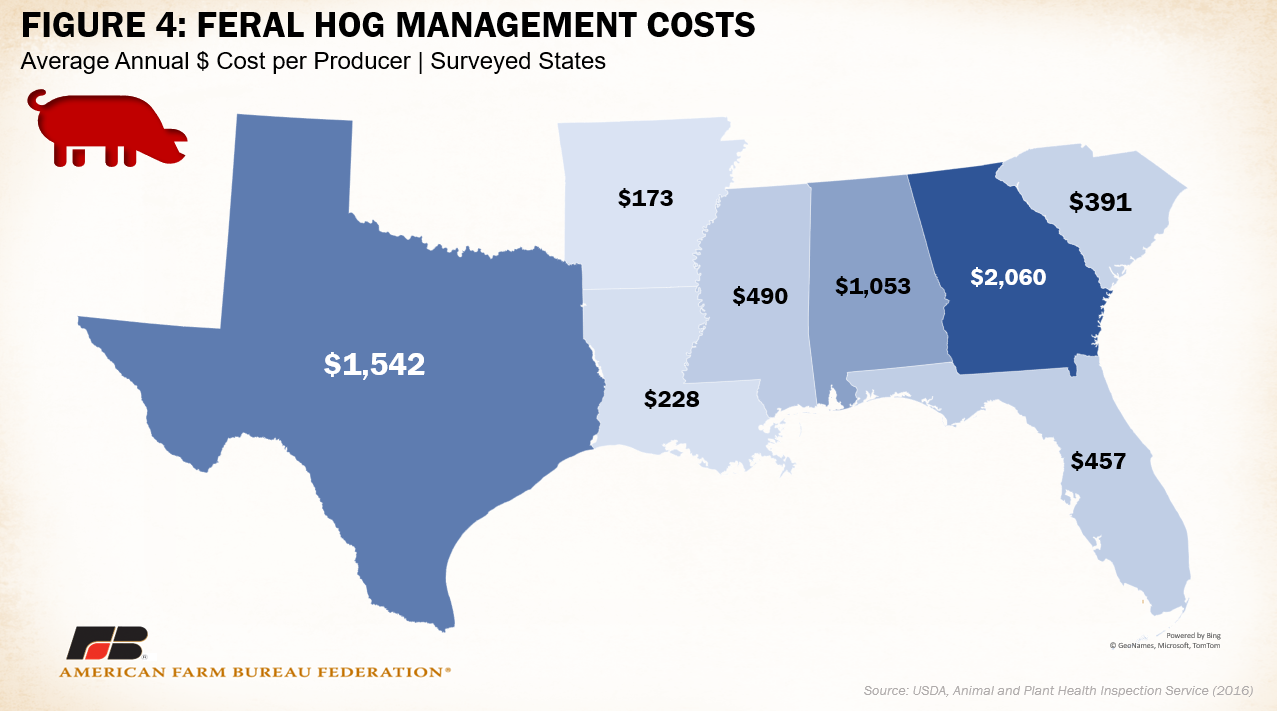
Combined, direct losses of crops and livestock to feral hogs and costs associated with population management and control impose substantial costs on farmers and ranchers already facing the normal challenges of farming. Not to mention the time and labor dedicated to fighting feral hog populations and the associated risk of their presence near farm and home. In total, across the U.S., feral swine result in billions in economic damage and control costs borne by more than 1.1 million producers impacted. One partially successful approach to managing hog populations has been the National Feral Swine Damage Management Program, which was first initiated in 2014 by Congress and which charges APHIS with a goal to “protect agricultural and natural resources, property, animal health, and human health and safety by managing damage caused by feral swine in the United States and its territories.” This includes a variety of field operations led by Wildlife Services to actively decrease feral swine populations in areas that are environmentally or agriculturally valuable. Integrated pest management approaches such as ground and aerial shooting, corral traps and snares have resulted in the removal of tens of thousands of hogs. Disease and population monitoring is also a core piece of the management program to reduce the possibility of pathogenic spread. The program also supports research funding for effective methods of swine management including fertility control agents, feasible toxicant delivery systems and ongoing economic appraisals.
The 2018 farm bill established the Feral Swine Eradication and Control Pilot Project, which provides $75 million to the Natural Resources Conservation Service and APHIS to further respond to the threat of feral swine. Pilot projects approved under this program can last for one to three years and will consist of feral swine removal by APHIS, restoration efforts supported by NRCS and assistance to producers for feral swine control provided through grants with non-federal partners. NRCS provides up to 75% of total project costs up to $1.5 million.
Even with existing efforts to limit the impacts of these prolific pigs, there are a wide variety of obstacles to their ultimate eradication. The high prolificacy (piglets per litter) of feral hogs typically allows them to far outpace and outbreed modern day control approaches. Combined with the costs associated with the most successful control practices, the outlook for population reductions can often been seen as a “wild-pig-chase.” Additionally, many hunting businesses have popped up across affected regions. These businesses may result in the preservation of local hog populations to sustain future business prospects. Population preservation should not be incentivized nor should the transportation of feral swine that can result in expanding feral swine territory be encouraged.
Summary
Feral hogs pose a major threat to agriculture, the environment, people, pets and livestock in the areas they occupy. Their ability to adapt to almost any ecosystem within the United States, combined with their extreme reproductive rates, weakens even the most aggressive management tactics. Considered one of the worst invasive species on the planet, the vast array of issues linked to feral hogs transcends any single economic or environmental interest. Pathogenic implications alone, especially during an era of heightened communicable disease awareness, threaten the lives and livelihoods of people and livestock worldwide. Dealing with feral hogs has been a losing battle with the doubling, tripling or quadrupling of current populations a very real possibility. Eradication of feral hogs is essential to a safe and secure food supply and to guarantee stability for thousands of farm and ranch businesses.
USDA’s Animal and Plant Health Inspection Service has ongoing projects to quantify the economic impacts of feral hogs on agricultural operations. Numbers presented in this article and in future reports are dependent on continued producer participation in surveys and interviews. AFBF will be working with state Farm Bureaus to streamline communication between APHIS and farm and ranch families. If you are impacted by feral hogs and would like your voice heard, please contact:
Jeanine Neskey, Biologist & Extension Specialist, USDA APHIS: Jeanine.t.neskey@usda.gov
or via Wildlife Services here.
